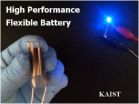(Press-News.org) An international research team, led from the University of Leeds, has found that a common anti-angina drug could help protect the heart against carbon monoxide poisoning.
Animal studies have shown that the anti-angina drug ranolazine can significantly reduce the number of deaths from arrhythmias – irregular or abnormally paced heartbeats – that have been triggered by carbon monoxide.
The findings could have important implications for the development of a protective treatment for adults and children who have been exposed to toxic levels of the gas.
"When patients are admitted to hospital with carbon monoxide poisoning, the main problem doctors face is preventing damage to the body whilst the body slowly removes the chemical," said University of Leeds' Professor Chris Peers, who led the research. "We've shown that ranolazine can rapidly protect the heart and prevent the kind of cardiac events which threaten patients long after their exposure to the gas."
Carbon monoxide poisoning causes 1.6 million deaths worldwide every year. Many people who have been exposed to the gas develop cardiac arrhythmias, which if left untreated can lead to a fatal cardiac arrest.
Until now, however, the underlying biochemical mechanisms causing damage to the heart have not been fully understood, preventing the development of effective treatments.
Ranolazine, which is sold under the trade name Ranexa, was approved in 2006 in the US for the treatment of angina. The drug works by targeting a sodium channel in the heart - the same channel that can also induce irregular heartbeats.
Researchers at the University of Leeds examined the effect of ranolazine in single cardiac cells, to learn why carbon monoxide can trigger arrhythmias. They found that exposure to the gas caused a key membrane channel carrying sodium ions through the heart to stay open for longer. This in turn caused calcium to build up within cells, with the combined effect altering the heart's regular cycle.
Colleagues at the Université Montpellier 1 and Université de Avignon in France then trialled ranozaline on rats exposed to carbon monoxide, to test its protective effects. They found that the drug markedly reduced the chance of arrhythmia in the animals.
"Whilst the link between arrhythmias and carbon monoxide has been known for over 50 years, this is the first piece of research to explain the underlying process," said University of Leeds' Professor Derek Steele, who co-authored the research. "At the molecular level, we have shown that the mechanism underlying this adverse effect of carbon monoxide is a rise in the level of nitric oxide within cells, which in turn alters the function of the sodium channel."
The findings may also help those living in built-up areas or whose work involves daily exposure to lower levels of carbon monoxide, such as firefighters, the researchers believe. A recent and extensive epidemiological study of nine million people in the US1 showed a clear link between environmental carbon monoxide exposure and hospitalisation due to cardiovascular complaints. As ranolazine is a daily medication for angina, the researchers suggest it may be suitable to protect patients from the harmful effects of chronic exposure, though human clinical trials will be required to confirm this.
"The next step will be to replicate these findings in human trials. As the drug has been clinically approved, roll out of this treatment could begin soon after we have these results," said Professor Peers.
Dr Hélène Wilson, Research Advisor at the British Heart Foundation (BHF), which co-funded the study, said:
"This study is a good example of research being used to better understand the underlying causes of an abnormal heart rhythm and in this case it has uncovered the ability of an old drug to perform a new trick. Carbon monoxide poisoning is tragically common but hopefully these promising results can be replicated in people so that it saves lives in the future."
###
The research is funded by the BHF, Gilead Sciences, the Wellcome Trust and Fondation de France. The paper will be published in the American Journal of Respiratory and Critical Care Medicine. An advance copy can be found online here: http://ajrccm.atsjournals.org/content/early/2012/07/18/rccm.201206-1005PP.abstract
Further information
Professors Chris Peers and Derek Steele are available for interview. A copy of the paper is available for journalists on request.
Contact Richard Mellor
Communications and Press Office, University of Leeds
T: +44 (0)113 3434031
E: r.d.mellor@leeds.ac.uk
Notes to Editor
1. Bell, ML, Peng RD, Dominici F, Samet JM. Emergency hospital admissions for cardiovascular diseases and ambient levels of carbon monoxide: results for 126 United States urban counties, 1999-2005. Circulation 2009; 120:949-955. http://circ.ahajournals.org/content/120/11/949.full
About the University of Leeds
The 2008 Research Assessment Exercise showed the University of Leeds to be the UK's eighth biggest research powerhouse. The university is one of the largest higher education institutions in the UK and a member of the Russell Group of research-intensive universities. Its vision is to secure a place among the world's top 50 universities by 2015. www.leeds.ac.uk
About the British Heart Foundation
The British Heart Foundation (BHF) is the nation's heart charity, dedicated to saving lives through pioneering research, patient care, campaigning for change and by providing vital information. But we urgently need help. We rely on donations of time and money to continue our life-saving work. Because together we can beat heart disease.
For more information visit www.bhf.org.uk/pressoffice
About the Wellcome Trust
The Wellcome Trust is a global charitable foundation dedicated to achieving extraordinary improvements in human and animal health. It supports the brightest minds in biomedical research and the medical humanities. The Trust's breadth of support includes public engagement, education and the application of research to improve health. It is independent of both political and commercial interests.
www.wellcome.ac.uk
Anti-angina drug shows protective effects from carbon monoxide
2012-08-06
ELSE PRESS RELEASES FROM THIS DATE:
Researchers gain information advantage from surprising quantum source
2012-08-06
New research lends hope that a phenomenon called quantum discord could be harnessed to bring quantum technologies within easier reach than expected. The work, by an international team, is published 5 August in Nature Physics.
Up until a few years ago, researchers thought that realising quantum technologies would mean harnessing the most difficult-to-tame properties of the quantum world. For example, 'entanglement', the phenomenon referred to by Einstein as spooky-action-at-a-distance, was thought to be a resource required to run a quantum computer. This presents a challenge. ...
Taking a hit or 2
2012-08-06
Despite a huge amount of research effort, the molecular mechanisms that underlie the transition from a "normal" cell to a cancerous cell are only poorly understood. After the discovery of the first cancer-causing genes or oncogenes and the finding that they are mutated forms of normal cellular genes, it was widely believed that a single mutation was enough to cause cancer. Subsequent research, however, has revealed that most cancers only develop as a result of several mutations. A bewildering variety of combinations of mutations have been shown to have the potential ...
A KAIST research team has developed a high performance flexible solid state battery
2012-08-06
The team of Professor Keon Jae Lee from the Department of Materials Science and Engineering, KAIST has developed a high performance flexible all-solid-state battery, an essential energy source for flexible displays (see paper in Nano Letters: "Bendable Inorganic Thin-Film Battery for Fully Flexible Electronic Systems").
The technological advance of thin and light flexible display has encouraged the development of flexible batteries with a high power density and thermal stability. Although rechargeable lithium-ion batteries (LIB) have been regarded as a strong candidate ...
Too many Facebook friends bad news for charities
2012-08-06
New research suggests the more friends we have on Facebook, the less likely we are to share information about charitable causes.
Economist Professor Kimberley Scharf, from the Centre for Competitive Advantage in the Global Economy (CAGE) at the University of Warwick, claims when we have larger online social networks, we rely on other people to pass on information about opportunities to give. This phenomenon is called 'free riding'.
Professor Scharf also suggests we may even rely on others to donate. She will present her research paper 'Private Provision of Public Goods ...
Quantum physics: New insights into the remote control of quantum systems
2012-08-06
A fundamental characteristic of quantum physics is the fact that two or more particles can exhibit correlations stronger than classically allowed. This unique characteristic applies particularly to quantum entanglement: as soon as the quantum state of a particle is measured the state of its entangled partner changes accordingly, regardless of how far apart the two entangled particles might be. This feature allows for the remote quantum state preparation, which is an essential ingredient for applications in quantum communication, quantum cryptography, and quantum computation.
The ...
UNC team describes novel inflammatory protein function
2012-08-06
A UNC-led team of scientists describes the function of a previously uncharacterized protein that dramatically influences inflammation.
A majority of the NLR family of proteins function as activators of inflammation. However, scientists at UNC report that a newly identified NLR protein, NLRC3, was able to inhibit a major inflammatory pathway that is controlled by a protein called NF-Kappa B. NF-Kappa B activation has been long associated with inflammation and cancer promotion. Their article appears in the August 5,2012 online publication of the journal Nature Immunology. ...
Research links extreme summer heat events to global warming
2012-08-06
VIDEO:
This visualization shows a flat map of the Earth with summertime temperature anomalies for the Northern Hemisphere. This analysis compares observed seasonal mean temperatures (June-July-August) to the seasonal mean temperatures...
Click here for more information.
A new statistical analysis by NASA scientists has found that Earth's land areas have become much more likely to experience an extreme summer heat wave than they were in the middle of the 20th century. The research ...
UK riots 2011: Holding media to account after the riots
2012-08-06
News outlets need to be held to account for their coverage of the English riots, a new report has argued.
Media and the Riots: A Call for Action, published today on the first anniversary of the riots, is the first report to examine the impact of the mainstream print and broadcast media's reporting on the communities most affected.
The report, written by Dr Leah Bassel of the University of Leicester's Department of Sociology, reflects the views of those who attended the Media and the Riots conference held by the Citizen Journalism Educational Trust and citizen journalism ...
Vaginal delivery as safe as cesarean for most early preterm births
2012-08-06
Philadelphia, PA, August 6, 2012 – Vaginal delivery for early preterm fetuses presenting head first, or vertex presentation, had a high rate of success with no difference in neonatal mortality compared to cesarean delivery, a new study published in the American Journal of Obstetrics and Gynecology reports. For breech births, however, the failure rate of vaginal delivery was high and planned cesarean delivery was associated with significantly lower neonatal mortality.
"Selecting a route of delivery at less than 32 weeks' gestation is a difficult clinical decision given ...
Tale of 2 scientific fields -- ecology and phylogenetics -- offers new views of Earth's biodiversity
2012-08-06
Patterns in nature are in everything from ocean currents to a flower's petal.
Scientists are taking a new look at Earth patterns, studying the biodiversity of yard plants in the U.S. and that of desert mammals in Israel, studying where flowers and bees live on the Tibetan plateau and how willow trees in America's Midwest make use of water.
They're finding that ecology, the study of relationships between living organisms and their environment, and phylogenetics, research on evolutionary relationships among groups of organisms, are inextricably intertwined.
Results ...



